Assistance dogs: How to spot them
- Published
.jpg)
Ever seen someone with an assistance dog at a checkout queue and wondered what it does? Here is a photo guide to help you identify some of the dogs that are out there working at the moment.
Assistance dogs can help disabled people out in a variety of ways from acting as a guide to blind people, to fetching your washing out of the washing machine if you are unable to.
There are a number of different assistance dog charities and organisations ranging from the large such as Guide Dogs who currently have 4,700 dogs to the small like Medical Detection Dogs who have 50 dogs that detect sugar level fluctuations in people with diabetes.
The training of dogs takes a long time and is often very involved. Puppies sometimes start training at six to eight weeks old as they begin to familiarise themselves with their surroundings and learn commands.
All accredited assistance dogs pass the same initial test - a public access test. They also undergo task training which is specific to the disability of the person they will be assisting.
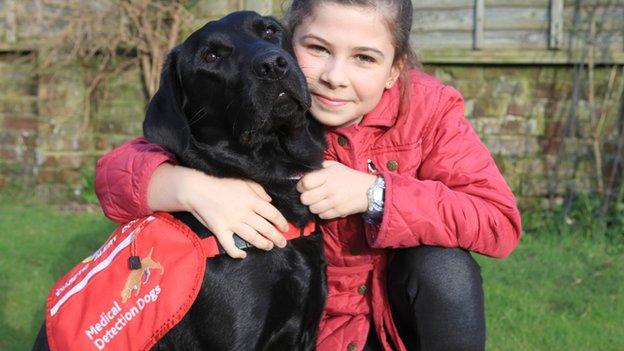
Medical detection dogs such as Polo wear red and can detect when diabetics' blood sugar levels are low.
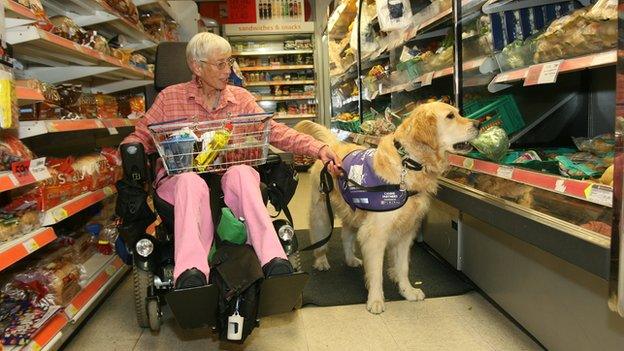
Assistance dogs trained by Canine Partners wear purple and assist with a range of daily tasks that may be difficult, painful or impossible to perform.
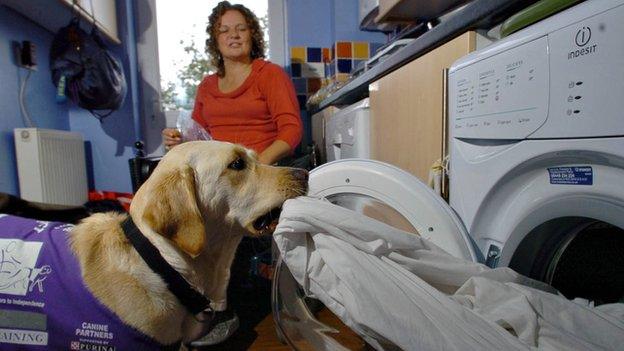
Assistance dogs carry out activities such as unloading the washing machine, shopping and opening and closing doors.
.jpg)
Support dogs wear blue. Among a number of trained assistance dogs are seizure alert dogs like Venus who can detect an epileptic seizure up to 50 minutes before it happens.
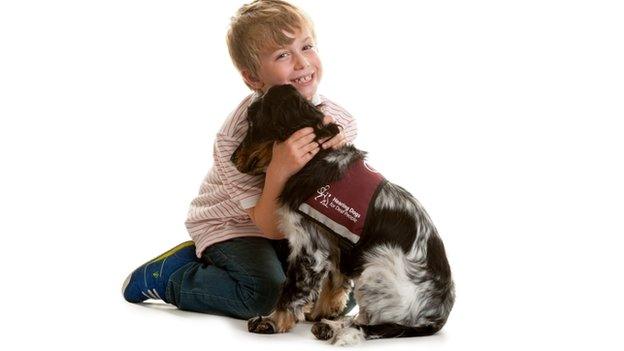
Hearing dogs for deaf people wear burgundy and hear sounds and danger signals such as the fire alarm, telephone and doorbell that deaf people like Joe can't.
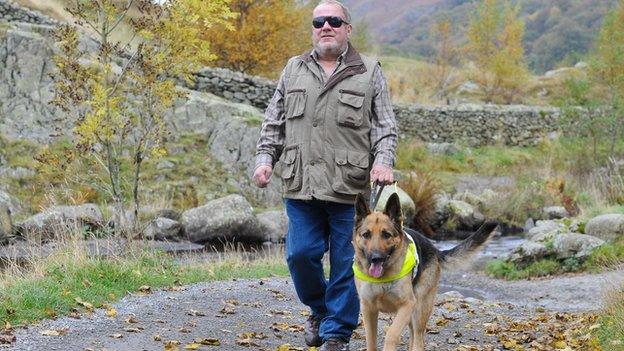
Guide dogs wear fluorescent strips around their white harness. They help blind and visually-impaired people move around by directing the person, stopping at kerbs until a command to cross is given and judging height so the owner doesn't bump their head.
.jpg)
Buddy dogs wear bright blue and are guide dogs that haven't qualified to work as mobility assistance dogs. They improve the quality of life of blind and partially-sighted children and young people by contributing to sensory and physical development.
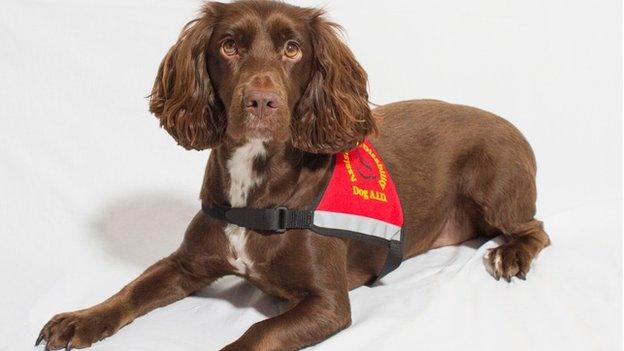
Assistance in disability dogs wear bright red. Like Canine Partners' trained dogs, they help disabled people with daily tasks but are trained up by living with their disabled owner.
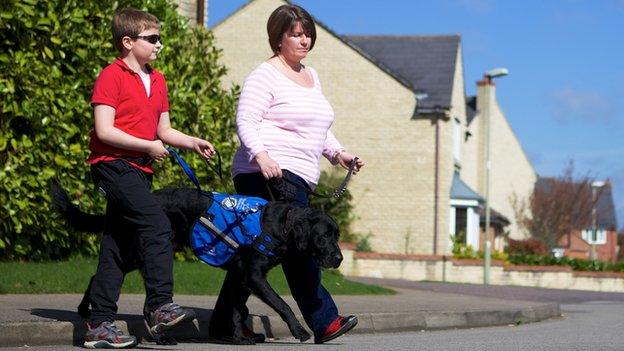
Autism dogs wear blue and are trained by Dogs for the Disabled who also provide assistance dogs that wear yellow. They can help autistic children feel relaxed and perform a "head-rest" where they place their head on the autistic child's knee in order to provide comfort.
Assistance dogs can have "career changes". When training at Guide Dogs for example, a dog who displays acute smell may be recommended to become a medical detection dog, or sometimes they have excellent credentials as both a guide dog and a seizure alert dog giving them the potential to help somebody with both needs - a blind person with epilepsy for example.
Dogs which help people with anxiety and other mental health problems are beginning to emerge in the UK, though are more popular in the US. Presently these dogs are not covered by either the Equality Act or recognised by Assistance Dogs UK which oversees seven accredited assistance dog charities and organisations although and campaigners are hopeful this will change.
Assistance dog owners have equal rights laid down by the Equality Act 2010. With a dog they have rights to public services supplied by banks, shops, hotels, libraries, pubs, taxis and restaurants. It is against the law for assistance dog owners to be refused access to a taxi or minicab with their dog, unless the driver has a GP certificate showing medical exemption.
There are a number of charities and organisations that help to provide assistance dogs to people who may need them. Some dogs may wear the same colour jackets but can be identified by the writing on the bib. When in training puppies may wear different colours to their adult counterparts.
Follow @BBCOuch, external on Twitter and on Facebook, external, and listen to our monthly talk show